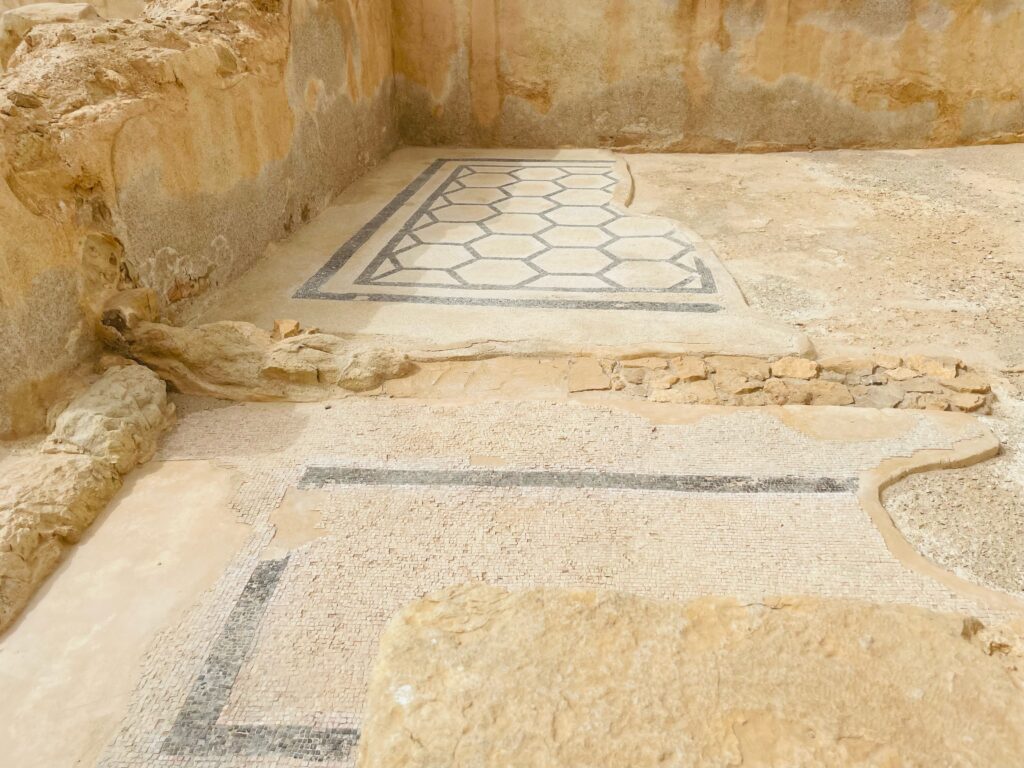
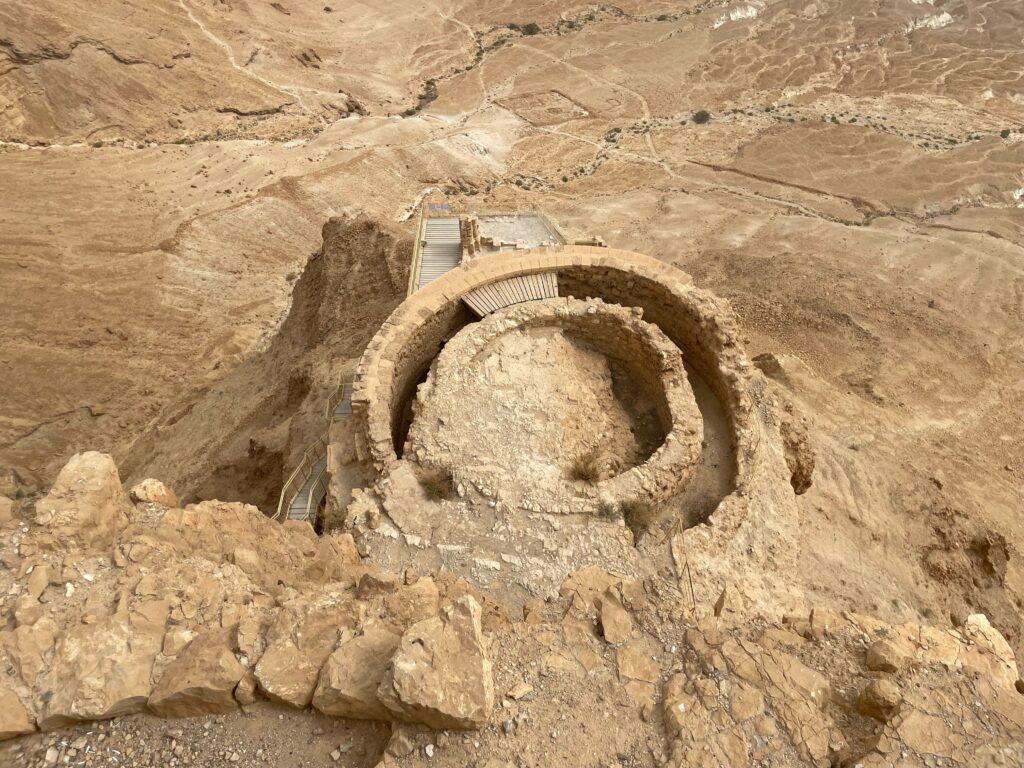



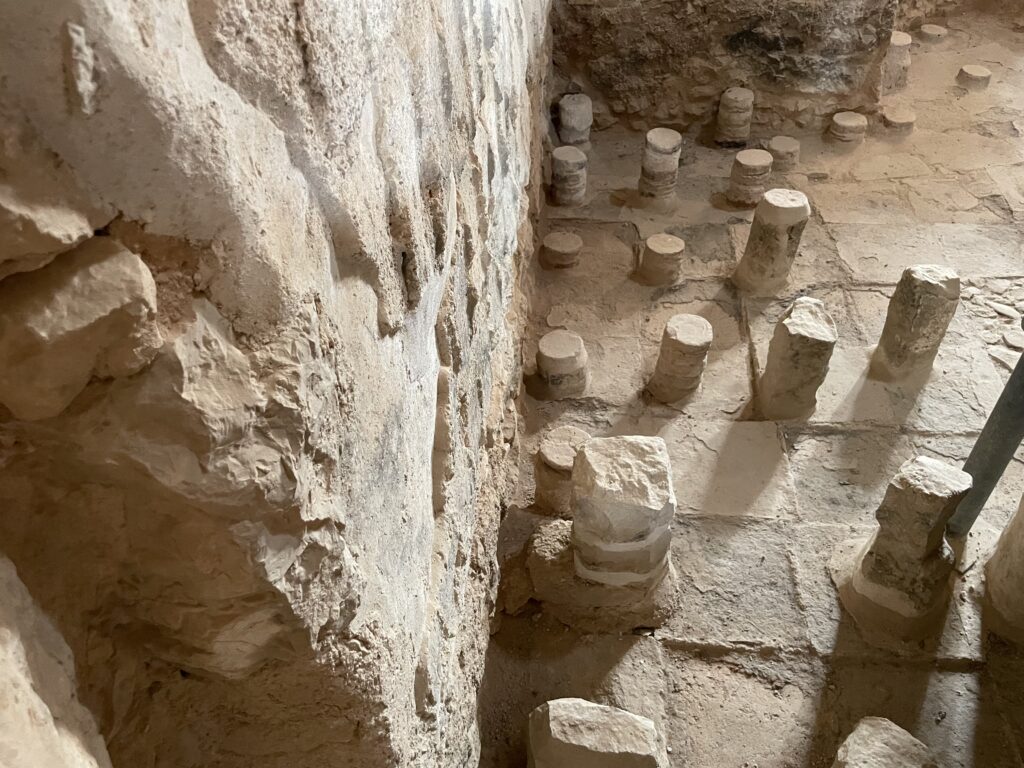


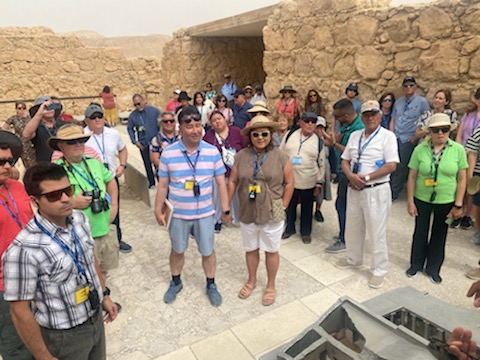
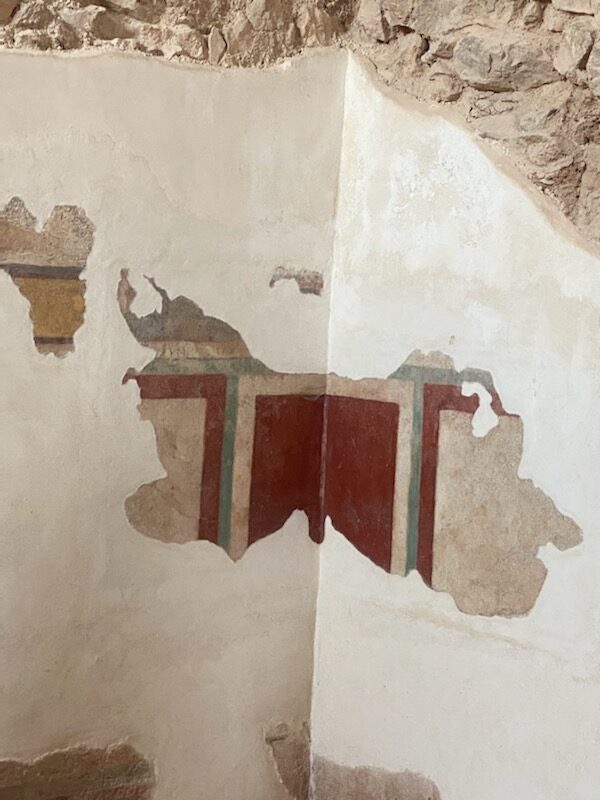

Masada
Masada is not mentioned in the Scriptures, it was Herod’s winter palace, and was the last stronghold for the Jews when Titus came in 70 A.D. and destroyed Jerusalem.
This remnant held out on top of this rock for about three years. The Romans had to build a ramp to get to the top. By the time they reached it, all were dead, but two women and five children. After the Titus and the Roman legions destroyed Jerusalem and other towns and cities, the only strong hold left of the Jewish remnant called the sicarii commanded by Eleazar, a descendant of Judas, the Galilean. Judas had led a rebellion in Galilee against the Roman taxing sometime during the life of Christ, or earlier. In the early period of the church at Jerusalem, when the Sanhedrin was contemplating how to stop the Apostles, Gamaliel mentions Judas of Galilee, Eleazar, (leader of a revolutionary and Zealot group of Jews who were conservative like the Pharisees, but more aggressive in their efforts to thwart the rule of Rome.), led the final group of men, women and children living in the Masada fortress, originally built by the Hasmoneans, then later Herod the Great turned it into a fortress. It served also as winter retreat for the Herodian families. This flat mesa type rock structure jets 1300 feet above the Dead Sea floor. It has one winding snake like path that made it very easily defended. Herod built a wall around the top, encasing north to south 1,950 and 1000 feet east to west. Herod also built two new palaces to accommodate the royal family. On the north west end a three tiered palace was built into the side of the mesa. On the walls Herod also fortified with 37 towers. It storage capacity was truly remarkable, it had storage for grain, wine, oil, legumes, and dates to last for years, and cisterns chiseled into the sides and on top the mountain. Archeologist Yigael Yadin, estimated that the total capacity of the cisterns would have been 1, 400, 000 cubic feet of water. The fortress was nearly impregnable. It is no wonder the group of 960 Zealots could survive up on top for almost 3 years.
Acts 5:33–39—33 When they heard that, they were cut to the heart, and took counsel to slay them. 34 Then stood there up one in the council, a Pharisee, named Gamaliel, a doctor of the law, had in reputation among all the people, and commanded to put the apostles forth a little space; 35 And said unto them, Ye men of Israel, take heed to yourselves what ye intend to do as touching these men. 36 For before these days rose up Theudas, boasting himself to be somebody; to whom a number of men, about four hundred, joined themselves: who was slain; and all, as many as obeyed him, were scattered, and brought to nought. 37 After this man rose up Judas of Galilee in the days of the taxing, and drew away much people after him: he also perished; and all, even as many as obeyed him, were dispersed. 38 And now I say unto you, Refrain from these men, and let them alone: for if this counsel or this work be of men, it will come to nought: 39 But if it be of God, ye cannot overthrow it; lest haply ye be found even to fight against God.
Flavius Silva, the Roman governor led his troops and surrounded the fortress, and built bulwarks and camps. On the south side Silva built a ramp that they could move their war machinery including a tower and battering ram into place to take the Jews. However the Jews all committed suicide instead of being taken captive by the Romans, each man killing his wife and children, then another man would take his life. When the romans reached the top and came inside the fortress all but 2 women, and 5 children, who hid in a storage area, were dead.
This ended the Jewish rebellion and Israel as a nation. Many of the Jews were sold into slavery or butchered leading up the final conflict at Masada.



